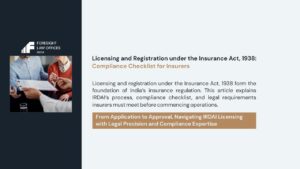Patents are exclusive rights granted by governments to inventors, enabling them to prevent others from making, using, or selling their invention without authorization. In the pharmaceutical industry, these rights are especially important, as developing new drugs involves substantial investment in research, clinical trials, and regulatory approvals. Patents provide the opportunity to recoup these costs and generate profits, which in turn fuels further innovation.
However, this system can also be misused. Many pharmaceutical companies charge exorbitant prices for essential medicines, making them unaffordable for large segments of the population. In some cases, they may choose not to manufacture or distribute drugs in certain countries, or impose restrictive licensing conditions, thereby limiting access even further.
To address such issues, Compulsory Licensing allows governments to authorize the production of a patented product without the patent holder’s consent under certain conditions. According to Section 84(1) of the Indian Patents Act, 1970, a compulsory license can be granted if:
- The reasonable requirements of the public are not being met,
- The drug is not available at a reasonably affordable price, or
- The patented invention is not being worked (i.e., manufactured) in India.
This legal provision aims to ensure that public health is not compromised due to commercial decisions. While the patent holder does receive royalties, there are strict guidelines and legal safeguards to prevent misuse. Compulsory licenses cannot be issued arbitrarily and are subject to judicial review.
Still, the system raises valid concerns. Once a compulsory license is granted, another company who is free from the burden of R&D and regulatory investments, can produce and sell the drug at a much lower price. This can significantly reduce the original inventor’s market share and revenue. The current safeguards, such as the three-year waiting period before a license can be requested, may not always be sufficient for innovators to recover their investments. Furthermore, terms like “reasonably affordable” are inherently subjective, potentially leading to inconsistent or unfair outcomes for patent holders.
Thus, compulsory licensing reflects a fundamental tension between two priorities: protecting the intellectual property rights that drive innovation, and ensuring broad access to essential medicines. While it is not a flawless mechanism, it serves a critical purpose, placing public health above profit motives in urgent situations.
Going forward, more balanced solutions must be considered. Options such as shortening patent terms while expanding protection scope, or creating global health funds to subsidize essential drugs, could help bridge the gap. For now, however, compulsory licensing remains the only morally justifiable solution that prioritizes saving lives when access is otherwise denied. Ultimately, innovation and access need not be opposing goals – they can and should coexist.






